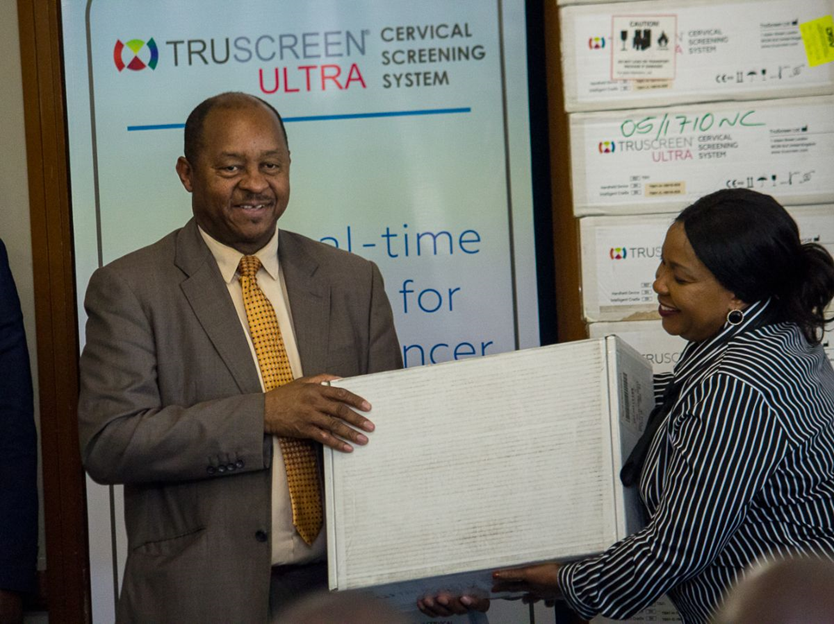Of the country’s 16 million residents, almost 1.3 million live with HIV[1], making Zimbabwe the country with the highest HIV rates in the world.
According to the World Cancer Research Fund, it is also the country with the fourth-highest rate of cervical cancer[2].
The link between HIV and cervical cancer may not be well known but women diagnosed with HIV have a higher risk of developing the disease. In fact, cervical cancer is the most common cancer among females living with HIV[3].
Almost all cases of cervical cancer are caused by HPV infections. Despite cervical cancer being preventable and treatable, the social stigma associated with HPV as a sexually transmitted infection results in three-quarters of women in Zimbabwe with cervical cancer seeking treatment far too late[4].
The high rate of cervical cancer in Zimbabwe underscores the need for effective and low-cost cervical screening methods throughout the country, and there are signs that political momentum to address this health crisis is building.
From African HIV Initiative to Zimbabwe
In 2018, TruScreen launched its African HIV Initiative that aims to bring effective cervical screening to HIV-affected women throughout the continent. The program involves talks with senior health officials to examine the state of cervical screening throughout Africa and identify potential methods to improve cervical screening among HIV-affected women.
Via this initiative, Zimbabwe’s National AIDS Council selected TruScreen to provide cervical cancer screening to women living with HIV.
The National AIDS Council leads and coordinates the national strategy in response to HIV and AIDS in Zimbabwe and has launched programmes on cancer awareness, cancer training, and screening and management to accelerate the fight against AIDS-defining cancers such as cervical cancer.
Political Support to Improve Screening
While this is a step in the right direction, government authorities in the country remain aware that it takes both screening and immunisation to tackle cervical cancer.
Zimbabwe First Lady, Her Excellency Auxillia Mnangagwa – who is also the country’s Health and Child Care Ambassador – has openly advocated the need for improved screening and early treatment of cervical cancer in the country. She has also committed to empowering communities that are lagging behind in health services.
Recently, the First Lady commended the National AIDS Council for providing the TruScreen device to the Ministry of Health and Child Care to help improve screening rates across the country.
Her nationwide cervical cancer awareness campaigns have prompted thousands of women to undergo cervical cancer screening and her actions underscore the opportunity for TruScreen’s technology in Zimbabwe.
TruScreen looks forward to building stronger relationships with local government and non-government groups in Zimbabwe as the country continues its fight against cervical cancer.
ENDS
[1] Avert, 2019, HIV and AIDS in Zimbabwe, Avert, viewed 29 November, https://www.avert.org/professionals/hiv-around-world/sub-saharan-africa/zimbabwe
[2] World Cancer Research Fund, 2019, Cervical cancer statistics, World Cancer Research Fund, viewed 2 December 2019, https://www.wcrf.org/dietandcancer/cancer-trends/cervical-cancer-statistics
[3] https://www.unaids.org/en/resources/presscentre/featurestories/2019/may/20190531_cervical-cancer-hiv
[4] Determinants of Late Stage Presentation for Treatment among Women with Cervical Cancer 2018, University of Zimbabwe
